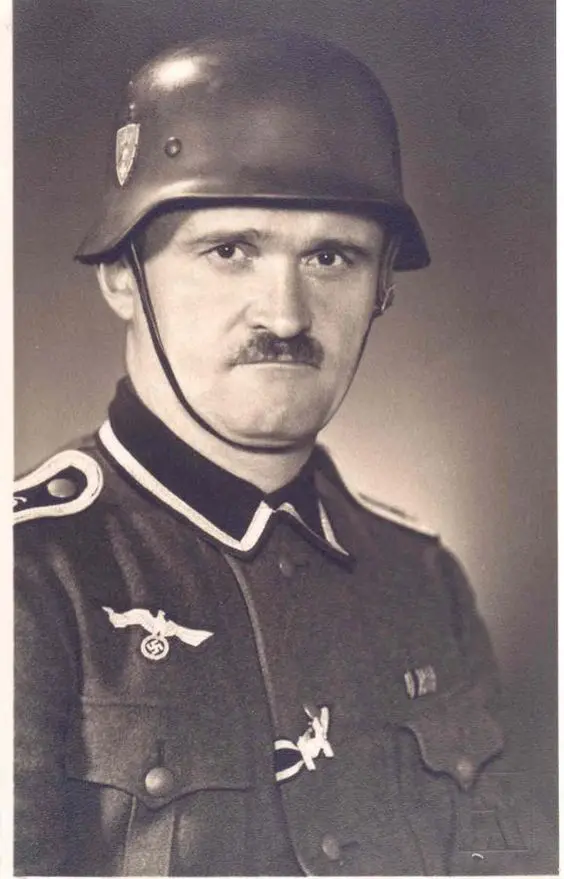The Helmet with the Grinning Skull. A Short History of the Danzig Police Helmet
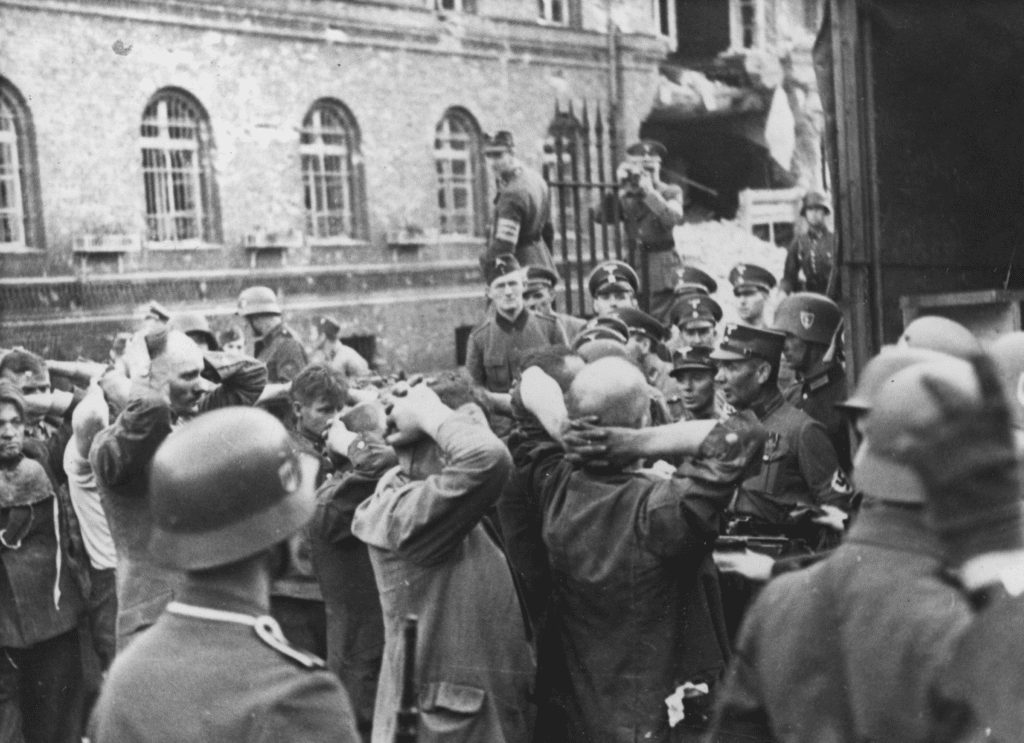
Fight for the Post Office
At 4 am on September 1, 1939 German sappers cut the power to Danzig’s Post Office plunging it’s Polish staff into total darkness. No doubt a fitting act foreshadowing the dark times Poland would soon endure. World War II had just officially started, and the Free City of Danzig was about to be in the middle of the war. The now darkened post office was considered Polish territory even though it rested in the Free City of Danzig. Prior to the end of the Great War, Danzig had been part of Germany, and now 21 years later the Germans were going to take it back. The Poles who huddled inside the post office buildings had a small cache of weapons among them, and they were going to fight for this little piece of Polish real-estate. When those defenders looked outside the post office windows to see what they were up against saw local policemen with leering skull insignia on old WWI era German helmets preparing their attack.

The Danzig Police
The policemen with the skulls on their helmets were not unknown to the Poles they were about to fight. Prior to the war breaking out, these Policemen actually provided security to the city, and would have been a familiar site to those that worked within the post office. They were members of the Danzig constabulary known as the Polizei der Freien Stadt Danzig, or Police of the Free City of Danzig.
The Danzig police were created on August 19, 1919 as a security force for the new Free City. As allowed by the League of Nations, the force only consisted of 3,000 members. The members of the were ethnically German, but technically owed their allegiance to the Free City of Danzig not Germany.
The city of Danzig had been sheared away from Germany in accordance with the terms of Treaty of Versailles after the end of World War I. The intent was to create a semi-autonomous city-state which would be neither German or Polish. The terms however favored Poland in that they were given full rights to the port. The city was well over 50% ethnically German. The treaty dictated that these Danzig Germans be stripped of their German citizenship. Most of the Germans resented this loss of citizenship and being separated from the rest of their country. The seeds of a future war were sewn.

The Danzig Police took their orders from Danzig Senate’s Department of Internal Affairs; a senate that was heavily influenced by Nazi Germany. After Danzig’s Volkstag’s (parliament) elections in May 1933, the city’s Nazi party won an absolute majority all but assuring German dominance. As tensions between German and Poland escalated, Nazi authorities secretly began to draw up plans with the Danzig Police to seize Polish installations within the city of Danzig on the event of a German invasion. With these plans, the Danzig Police were now a Trojan Horse within the city. Helmets were going to be needed with a combat roll looming. One of the changes that came from this not so clandestine alliance with Nazi Germany was a uniform change. In the winter of 1936 new Danzig Police uniform regulations were published, authorizing the wearing of field gray uniforms and German helmets. The helmets were to have a skull insignia on the wearer’s right and a Danzig crest on the left. In the past they had worn traditional blue Police uniforms. The change to field gray uniforms and German helmets made the Danzig police look almost identical to German soldiers which was no doubt the intent.

The World War I Era Helmet
The coal scuttle style steel helmet was then, as it is today, instantly recognizable as a German helmet. After 1936 when the Danzig Police began donning them while on patrol, it was a sign to Germans as well as Polish residence of Danzig that Germany was beginning to tighten it’s grip around the free city.

While a new helmet had already been developed in Germany, known as the model 35, the Danzig Police relied on older M16, M18 and M18 cut-out helmets left over from the Great War. Many of these helmets were locally sourced in Danzig due to a surplus from World War I. Still, a careful examination of original photos indicates many of the helmets were fitted with newer German manufactured M27 chinstrap. These chinstraps are easily recognizable as they have a roller buckle which sits on the wearer’s left check. The older WWI chinstrap lack this feature. These chinstraps were issued starting in 1927 to Germany troops to replace the older WWI straps. The existence of these straps on helmets worn by the Danzig Police would likely indicate that the Nazi Government was actively supplying them with refurbished WWI era helmets.
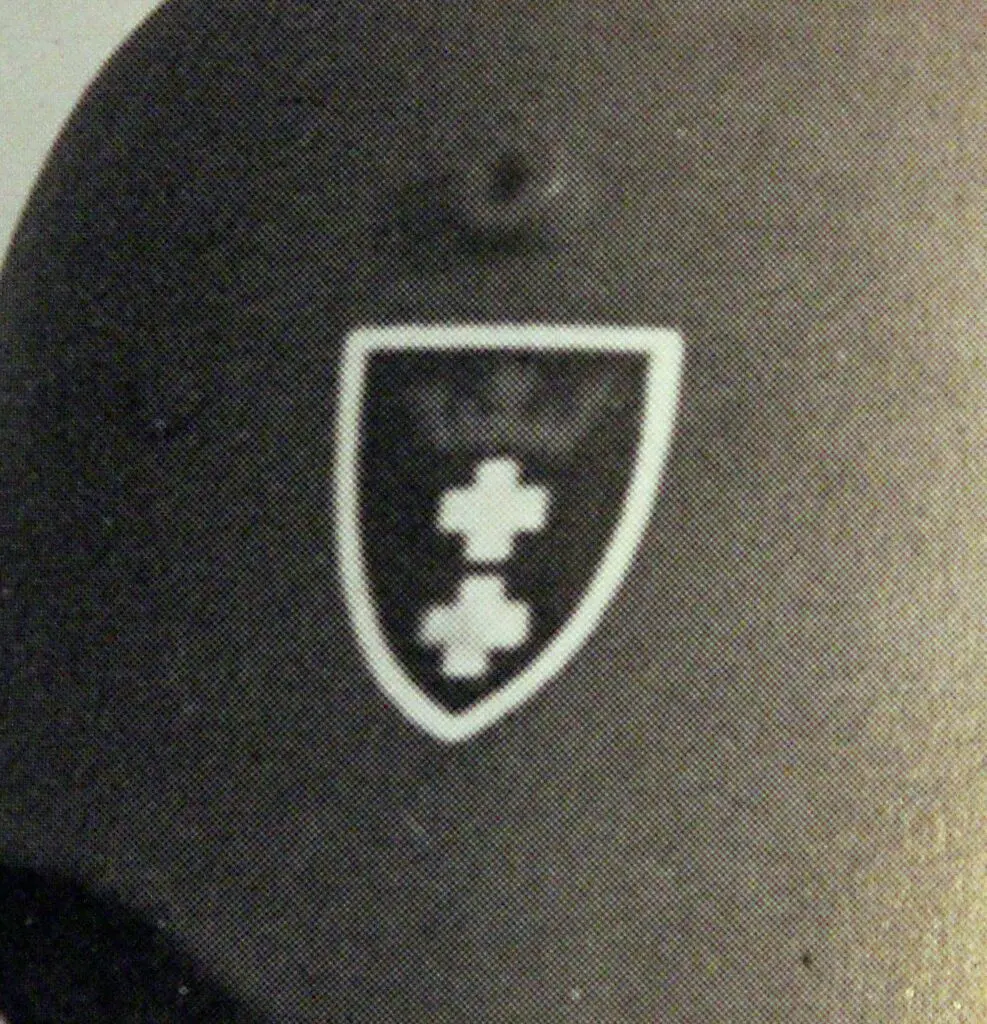
The Insignia
With the 1936 uniform changes, came the adoption of insignia for the helmet. A decal with the Danzig shield consisting of two stacked crosses surmounted by a golden crown on a red background bordered in white was authorized to be worn on the wearer’s left just below the helmet’s ventilation lug. To further illustrate the collusion that was going on between the German military and the Danzig Police, the decals were placed in exactly the same location on the helmet as those used by the German military.

A grinning skull or Totenkopf (death head) decal was placed on the wearer’s right. The use of this sinister looking death head to some would seem to be synonymous with the many crimes the Nazi regime would be responsible for in the upcoming war. The SS also used a similar Totenkopf which was in fact worn by concentration camp guards as well as front line troops from the Waffen-SS. This is part of the reason the Totenkopf is today widely associated with these crimes. This confusion has lead to some photos of Danzig Police being labeled as concentration camp guards. Others have supposed that it’s use was an attempt to emulate the SS. In truth the Danzig Totenkopf was worn as a commemoration of the old Imperial German 1st and 2nd Guard Hussar Regiment both of whom were garrisoned at Danzig until the start of World War I. These regiments wore similar Totenkopf on the front of their fur busby hats. The use of the Totenkopf by the regiments dates back to at least the Napoleonic era. The old Totenkopf symbol were looked upon nostalgically by the ethnic German residence of the city.
Both insignia seem to have been applied to the helmets largely in decal form. A few early photos from the 1936 and ’37 timeframe do show skulls that were hand rendered. The explanation could be that decals were initially unavailable at the time of the 1936 regulations resorting in the use of hand painted insignia until such time as decals became available.
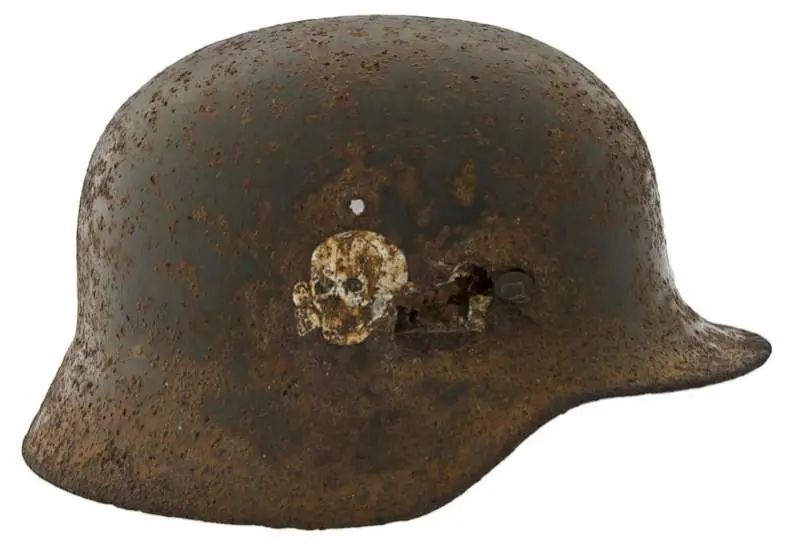
The M35 Helmet
A small number of photos have surfaced of members of the Danzig Police wearing the newer model M35 helmet. There is some question as to when they received these helmets. One assumption is that they received these helmets after the collapse of Poland when new equipment and supplies were distributed now that the Germans were in charge of Danzig again. A few photos taken during the German invasion of Poland show members of the Danzig Police armed with new K98 rifles and wearing M35s helmets.
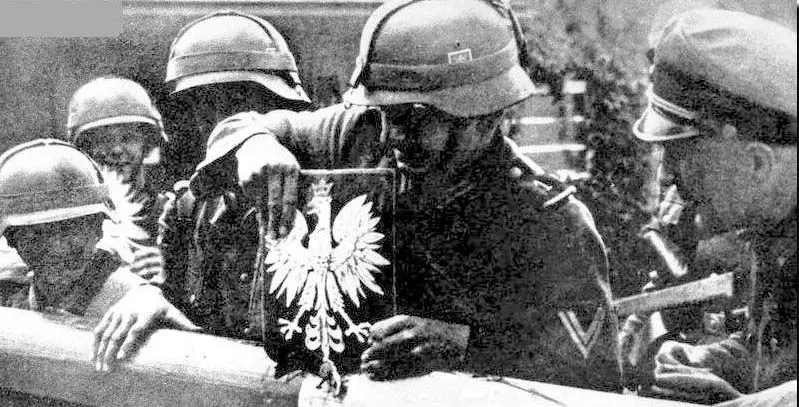
This would indicate that sometime before the invasion began new rifles and helmets were smuggled into Danzig. In these same photos the Danzig decals can clearly be observed. It is unlikely that time would have been taken to apply these decals during the chaos of the invasion. It is safe to speculate that the helmets were received at least a short time prior to the beginning of the invasion.
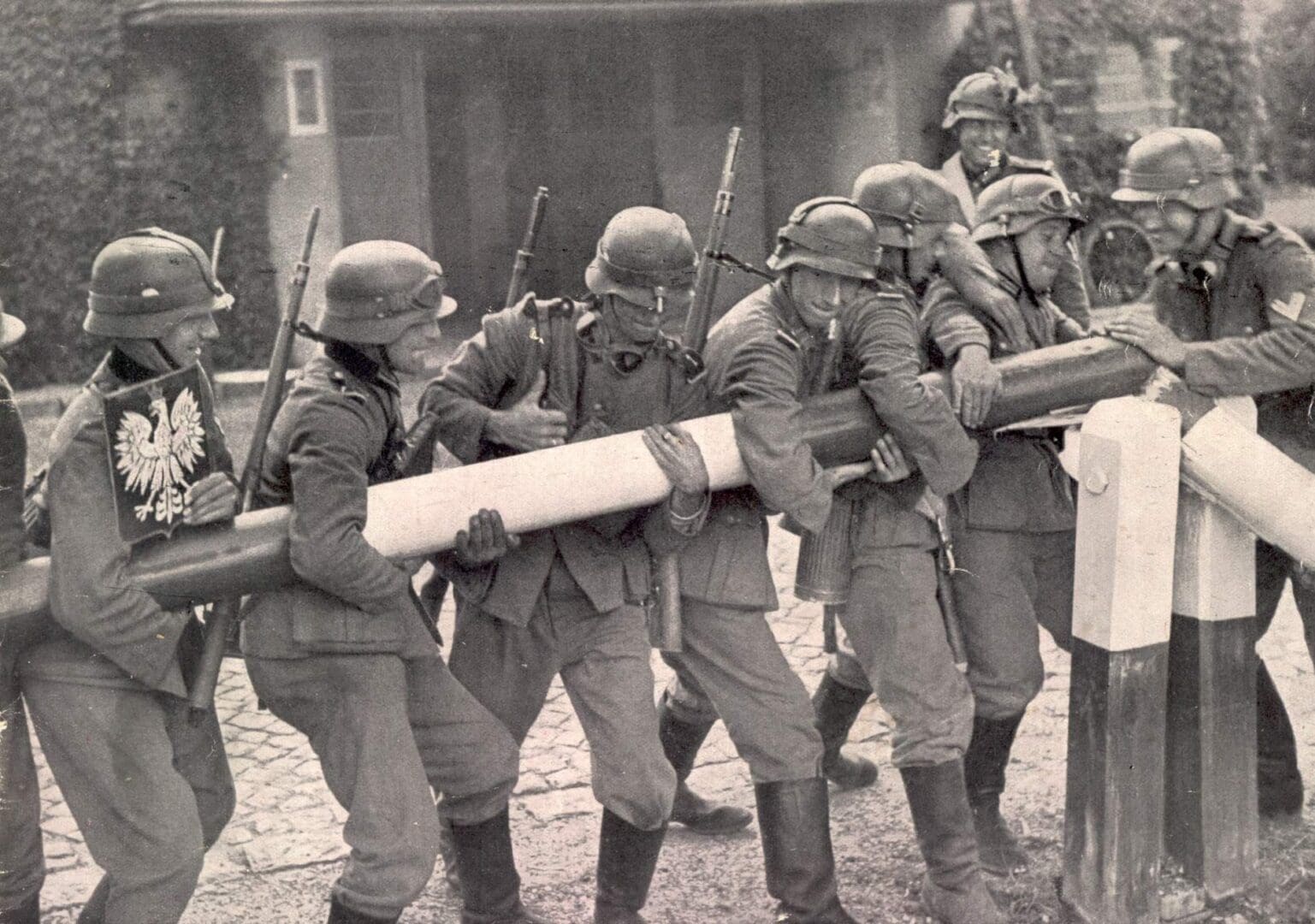
A Strange Service History
One of the duties the Danzig Police found themselves engaged in during the run up to the German invasion was keeping local Nazi sympathizers from persecuting the Jewish community. In spite of the strong Nazi influence, the Danzig police stayed on good terms with city’s Jews. In November of 1938, savage anti-Jewish riots broke out in Danzig, similar to those breaking out across Germany. The police coordinated with the Jewish community to protect Danzig’s Great Synagogue from arson attack. In a scene that may seem almost seral, German policemen with skulls on their helmets stood with Jewish World War I veterans to keep Danzig’s Great Synagogue safe from Nazi thugs. This was not an act of kindness. Nazi authorities feared a Polish military intervention in Danzig should things get out of hand in the city. Germany was not prepared at that moment to invade, the Danzig Police were under orders to keep the city calm until the time was right.

Combat
The combat history of the Danzig Police and their helmet would be relatively short after the outbreak of the war. When the German army finally did cross the Polish frontier, the Danzig Polish sprang into action attacking the City’s Polish Post Office. What was believed to have been a relatively simple operation, turned out to be a 15 hour brutal battle. With the Polish resistance stronger than expected, the Danzig Police were reinforced in their fight by the local SA and city’s SS organizations, SS Heimwehr Danzig, and SS Wachsturmbann “E”. The battle finally ended when the commander of the Danzig Police, Polizeioberst Willi Bethke, ordered gasoline pumped into the post office’s basements then ignited with hand grenades. Several of the Polish defenders burned to death; the rest fearing total incineration finally capitulated. Most of the defenders would be shot as unlawful combatant in the days ahead.
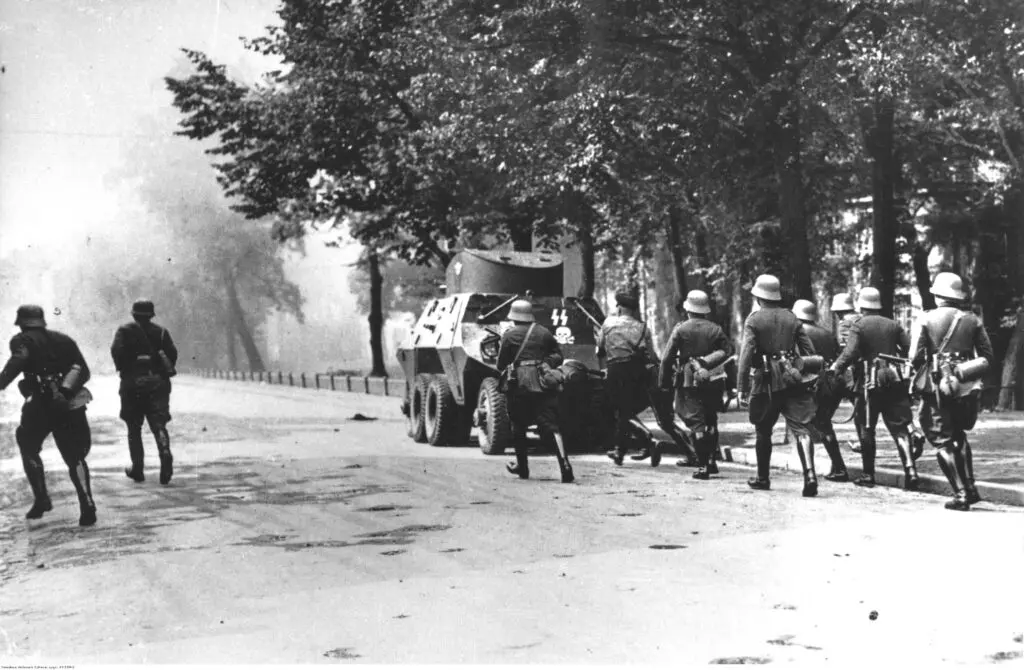
While the fight for the post office was occurring, another battle was commencing on the Baltic coast in a place called Westerplatte. There the Danzig police joined regular German Naval forces and assaulted the Polish Military Transit Depot on the peninsula in the Danzig harbor. As with the post office, the Poles at the transit depot fought much harder than expected. The Danzig Police attacks were pushed back several times with heavy casualties. In the end after seven grueling days of fighting the brave Poles ran up a white flag of surrender.
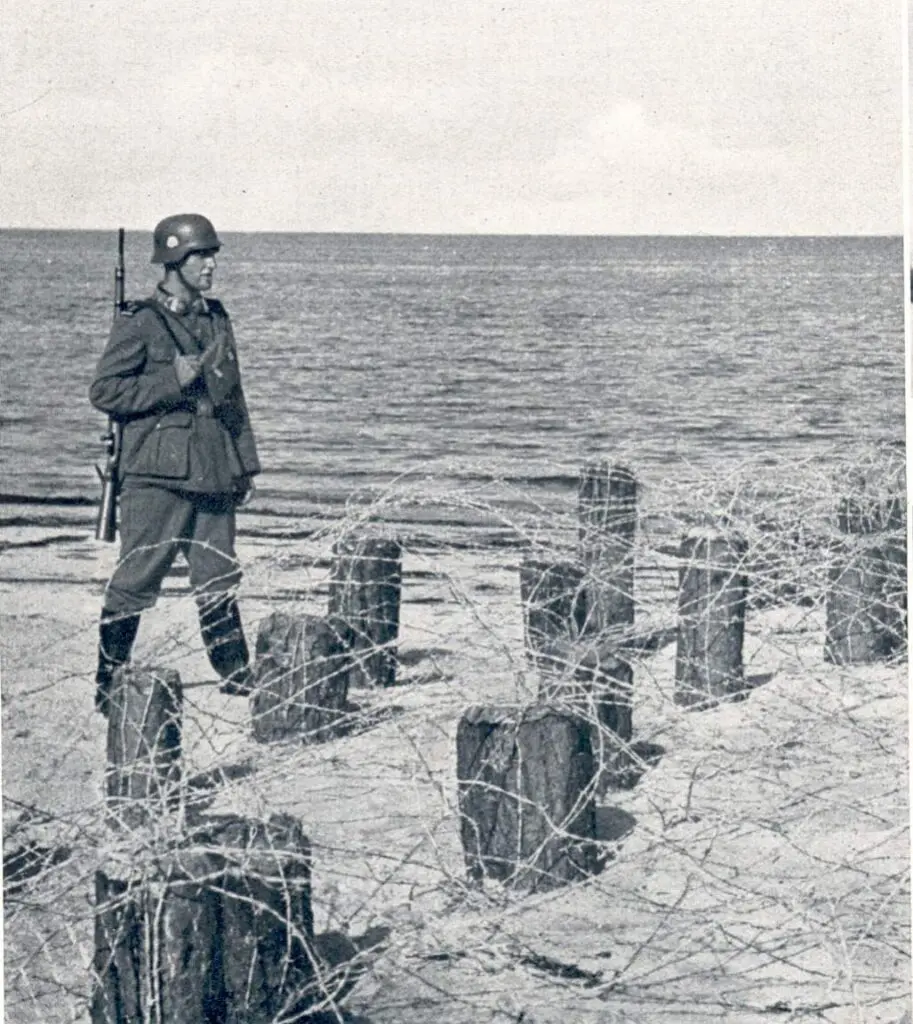
The Rarest Helmets of WWII
After Poland’s surrender, Danzig was once again reincorporated into the German Reich. The Danzig Police were no longer needed as a Paramilitary organization, and returned to their regular police duties. The unique Totenkopf helmets rarely appear in photos taken after the surrender of Poland. It may be that with the victory against Poland and their combat role concluded, steel helmets were seen as unnecessary. The helmets may have been turned into the German military equipment depots where they were reworked and reissued to other units. In late 1939 there were still helmet shortages in the Wehrmacht, and the Wehrmacht would need every helmets it could get as it expanded for future campaigns in France and the Soviet Union. There is also the possibility the helmets were put into storage for use at a later date. In 1945, at the end of WWII, the Soviets occupied Danzig. The remaining helmets may have been destroyed for scraps. Even with these possibilities there were few helmets to begin with as the Danzig Police never numbered more than 3,000 men. Whatever happened to them, these Danzig helmets today are almost totally absent from the collector market. Most of those that are sold today are clever forgeries. Original examples do exist though. A few have been dug from the ground by relic hunters, dropped by their wearers during the fighting for Westerplatte. A handful have been found forgotten, languishing in old basements or attics in what had been the city of Danzig, symbols of a city that no longer exists. In truth only a handful of true Danzig Police helmets exist today.
With the conclusion of WWII, Danzig was again stripped from the German Reich and given to Poland. In a clear attempt to remove any vestiges of German identity the city was renamed GdaÅ„sk, it’s German residence expelled. At the conclusion of the war, Danzig Police were disbanded and are largely forgotten. Even today they are frequently misidentified in photographs. Yet for those who do know, their helmets are unique with distinctive insignia that was used nowhere else. With the helmet’s rarity, an original example would be a crowning achievement in any helmet collection.
